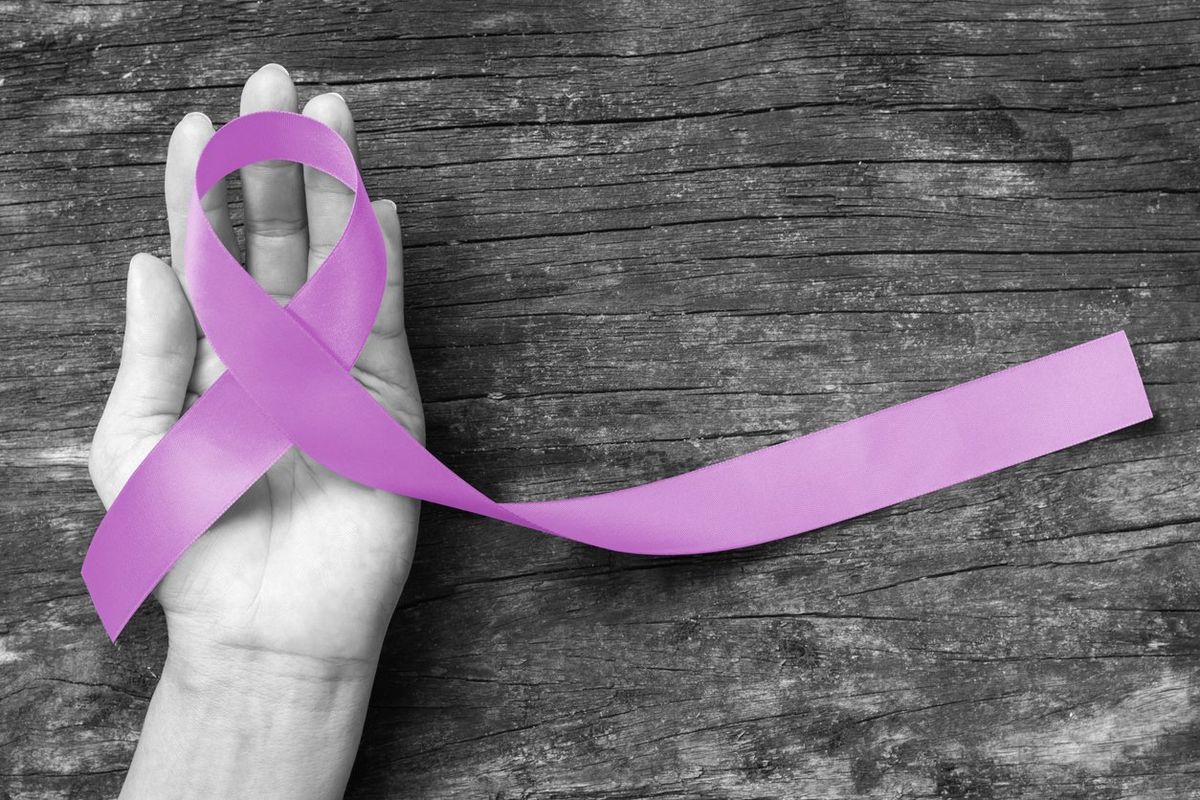Gynecologic cancer is defined as any type of cancer that begins within the reproductive organs of a woman or a person assigned female at birth.
In 2024, there will be an estimated 116,930 new cases, as well as 33,850 deaths from gynecologic cancers in the U.S.
5 Types of Gynecologic Cancer
1. Uterine Cancer
- Starts in a woman’s uterus
- The most common type of uterine cancer is called endometrial cancer because it starts in the endometrium, the lining of the uterus
- Most common in postmenopausal women
Ways to reduce risk of uterine cancer
- Maintain a healthy weight
- Stay physically active
- Take progesterone if you are on estrogen (manage hormone therapy with a board-certified gynecologist)
- Use birth control pills (oral contraceptives)
Symptoms of uterine cancer
- Abnormal vaginal discharge
- Bleeding after menopause
- Pain or pressure in the pelvic area
Treatment optionsfor uterine cancer
- Surgery
- Radiation
- Chemotherapy
- Clinical trials
2. Ovarian Cancer
- Develops in the ovaries or in cells in the far end of the fallopian tubes
- A woman’s lifetime chance of developing this cancer is 1 in 78
- Most common in women ages 63 and older
Ways to reduce risk of ovarian cancer
- Use birth control pills (oral contraceptives)
- Get genetic testing and possibly take action if you have a family history
Getting your tubes tied or having a hysterectomy reduces your risk for ovarian cancer, but these procedures are generally recommended only for medical reasons and not solely to prevent cancer.
Symptoms of ovarian cancer
- Bloating, abdominal swelling or weight loss
- Feeling an urgency to urinate or having to urinate frequently
- Abdominal or pelvic pain
- Feeling full fast and difficulty eating
- Extreme fatigue
- Pain during intercourse
- Period changes
- Constipation
- Upset stomach
Treatment options for ovarian cancer
- Surgery
- Radiation
- Chemotherapy
- Hormone therapy
- Targeted drug therapy
3. Cervical Cancer
- Starts in the cells that line the cervix, which is the opening of the uterus
- Most often linked to human papillomavirus virus (HPV), the most commonly transmitted sexually transmitted infection (STI)
- Can be detected by a Pap test, HPV test or combo test
Ways to reduce risk of cervical cancer
- Get the HPV vaccine
- Use condoms
- Don’t smoke
- Get screened regularly, starting at age 21 — Cervical cancer screenings can help catch precancerous or cancerous cells early when the cancer is more treatable and curable
Read: HPV Vaccination Is Cancer Prevention >>
Symptoms of cervical cancer
- Early stages often have no symptoms, which is why screenings are important
- Later stage symptoms can include:
- abnormal vaginal discharge
- abnormal bleeding
- bleeding or pain during sexual intercourse
Treatment options for cervical cancer
For precancer (also called cervical dysplasia)
- Laser ablation: A beam of high-energy light is used to vaporize abnormal tissue
- Cryotherapy: Abnormal cells are frozen
- Loop electrosurgical excision procedure (LEEP): Abnormal tissue is removed using a wire loop
- Cone biopsy (also called cold knife conization): A cone-shaped part of the cervix (the bottom and part of the center) is removed
For cancer
- Surgery
- Radiation
- Chemotherapy
- Targeted drug therapy
- Immunotherapy
4. Vaginal Cancer
- Starts in the vagina
- A rare form of cancer, accounting for 1% to 2% of cancers in the female genital tract
- Occurs mainly in older women — the average age of diagnosis is 67
- Up to 90% of vaginal cancers and pre-cancers are linked to HPV
Ways to reduce riskof vaginal cancer
- Get the HPV vaccine
- Use condoms
- Don’t smoke
Symptoms of vaginal cancer
- Abnormal vaginal bleeding, often after sex
- Abnormal vaginal discharge
- Painful intercourse
- Feeling a mass or lump in the vagina
- Advanced stage symptoms can include painful urination, leg swelling, back pain, pelvic or lower body pain, constipation
Treatment options for vaginal cancer
For precancer
- Laser ablation: A beam of high-energy light is used to vaporize abnormal tissue
- Topical therapy: Drugs like chemotherapy drug Fluorouracil (5-FU) or imiquimod cream can be placed on affected areas
For invasive vaginal cancer
- Radiation therapy
- Surgery
- Chemotherapy
5. Vulvar Cancer
- Involves the outer part of the female genitals, known as the vulva, and the vagina
- Very rare: 6% of female reproductive organ cancer and .7% of all cancers in females
- More than 1 in 2 cases are linked to high-risk HPV
Ways to reduce risk of vulvar cancer
- Get an HPV vaccine
- Use condoms
- Don’t smoke
- Keep up with regular pelvic check-ups
- Perform regular self-exams of the vulva — Hold a mirror up to your vulva and look for changes in skin, like areas that are white, irritated or red, as well as new sores, growths or bumps
Symptoms of vulvar cancer
- An area of the vulva that looks abnormal — lighter or darker than normal skin, red or pink skin
- A red, pink, or white bump or lump that may have a wart-like surface or feel rough and thick
- Itching
- Thickening of vulvar skin
- Burning or pain
- Abnormal bleeding or discharge
- An open sore that typically lasts for longer than a month
Treatment options for vulvar cancer
- Topical creams therapy, including chemotherapy drugs fluorouracil (5-FU) or imiquimod
- Surgery
- Radiation
- Chemotherapy
- Ovarian Cancer: Know the Symptoms and Risk Factors ›
- Preventing and Coping with Gynecologic Cancer ›
- Uterine Cancer Hub - HealthyWomen ›
- Fast Facts: What You Need to Know About Endometrial Cancer ›
- Facts About Gynecologic Cancer - HealthyWomen ›
- WomenTalk: The Lowdown on Gynecologic Cancer - HealthyWomen ›







